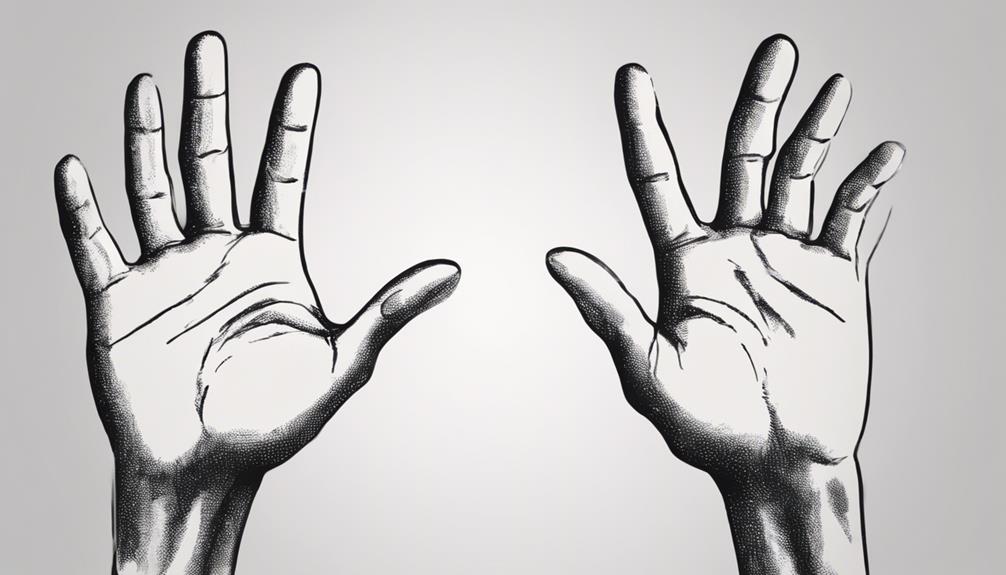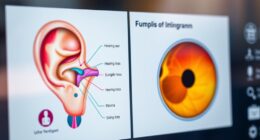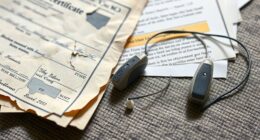Let’s uncover the beauty of effortlessly communicating ‘Good Morning’ through sign language by peeling back the layers.
As we explore the intricacies of expressing morning greetings in ASL, we'll unravel the nuances of hand positioning and movement crucial for effective communication.
Discover how mastering these fundamental signs can open up a world of connection and inclusivity.
Join us on this journey of learning and unlocking the power of silent conversations.
Key Takeaways
- Connect inclusively with Deaf community through sign language
- Use visual cues for effective communication
- Foster cultural awareness and sensitivity
- Break down barriers and promote respect through signing
Benefits of Learning Good Morning Sign Language
Learning Good Morning sign language offers a unique opportunity to connect with the Deaf and hard of hearing community in a meaningful and inclusive way. By understanding how to sign Good Morning, we can communicate with individuals who rely on visual cues for communication, showing respect and inclusivity. This knowledge not only fosters cultural awareness but also promotes sensitivity towards the Deaf community, breaking down barriers to communication.
Signing Good Morning in ASL isn't just a practical skill; it can infuse your day with positivity and warmth. Starting your day by signing Good Morning can set a welcoming tone and create a sense of camaraderie with those around you. Mastering this sign not only improves your ability to communicate effectively but also expands your linguistic horizons, making you a more versatile and empathetic communicator.
Ultimately, learning to sign Good Morning allows us to greet others in a unique and meaningful way, fostering connections and understanding across different communities. It's a small gesture that can have a big impact, bridging gaps and building relationships based on mutual respect and inclusivity.
Basic Signs for Good Morning

To properly convey 'Good Morning' in American Sign Language (ASL), one must combine specific hand shapes and movements for 'good' and 'morning'. The sign for 'Good Morning' involves signing 'good' with a flat hand near the chin, then transitioning to signing 'morning' with a curved hand near the forehead.
Understanding the individual signs for 'good' and 'morning' is crucial for accurately signing 'Good Morning' in ASL. By practicing this sign regularly, fluency and accuracy in expressing morning greetings in ASL can be improved.
Learning the proper hand shapes and movements for 'Good Morning' not only enhances communication but also fosters cultural understanding within the Deaf community. Mastering this basic sign lays a solid foundation for further ASL learning and interactions.
Embracing these fundamental signs empowers us to connect more authentically with Deaf individuals and enriches our ability to serve others effectively through sign language communication.
Practice Techniques for Memorization
Practicing sign language gestures for 'Good Morning' through interactive methods enhances memorization and fluency. Utilizing flashcards with the sign language gestures, practicing in front of a mirror, establishing a daily routine, watching instructional videos, and quizzing yourself are effective techniques.
| Techniques | Description | Benefits |
|---|---|---|
| Flashcards | Use flashcards with the sign language gestures to aid in memorization. | Helps reinforce memory retention. |
| Mirror Practice | Practice signing 'Good Morning' in front of a mirror to check your hand movements. | Allows for self-correction. |
| Daily Routine | Create a daily routine of signing 'Good Morning' to reinforce memory. | Builds consistency in practice. |
| Video Tutorials | Watch videos or tutorials demonstrating the sign for 'Good Morning' to improve understanding. | Visual aid for better comprehension. |
Common Mistakes to Avoid

When signing 'Good Morning' in ASL, it's crucial to pay attention to the correct handshapes to avoid common mistakes. Using incorrect handshapes can change the meaning of the sign and lead to misunderstandings. Remember also to focus on your facial expressions as they play a significant role in conveying the right tone of the greeting.
Your hands' movement and position are equally important, so ensure you're performing the sign accurately. To improve your signing skills, practice 'Good Morning' in front of a mirror to check your form and make any necessary adjustments. Seeking feedback from a fluent signer or instructor can help correct any mistakes you might be making.
Resources for Further Learning
Exploring various resources can significantly enhance one's proficiency in ASL, particularly when it comes to mastering morning greetings like 'Good Morning'. To continue your learning journey, consider the following resources:
- Online ASL dictionaries and websites like Lifeprint and ASL University offer detailed explanations and videos on how to sign various phrases, including morning greetings.
- YouTube channels dedicated to teaching ASL, such as ASL Meredith, provide step-by-step tutorials on signing 'Good Morning' and other common phrases.
- ASL apps like The ASL App and SignSchool offer interactive lessons and quizzes to help reinforce learning and retention of sign language greetings.
- Joining ASL classes or workshops in your community or online can provide hands-on practice and feedback from experienced sign language instructors.
- Practice regularly with a study buddy or in front of a mirror to improve fluency and confidence in using ASL greetings like 'Good Morning'.
These resources offer a diverse range of learning opportunities to help you become more proficient in signing morning greetings and beyond.
Frequently Asked Questions
How Do You Say Good Morning in Sign Language?
We say 'Good Morning' in sign language by combining the signs for 'good' and 'morning'. The dominant hand forms the sign for 'good' near the chin, followed by the sign for 'morning' with the non-dominant hand.
Mastering the handshapes and movements of each sign is essential for proper communication. This common ASL greeting expresses well wishes for a pleasant start to the day, and practicing it can enhance fluency and connection in sign language conversations.
What Is the Fastest Way to Learn Sign Language?
The fastest way to learn sign language is by practicing regularly for at least 15-30 minutes a day to build muscle memory. Use online tutorials, apps, and videos to supplement learning.
Join a sign language class or community for practice with others and feedback. Focus on common signs and phrases first for quick communication skills improvement.
Be patient and persistent, as mastering a new language takes time and dedication.
Which Sign Language Is Easier to Learn?
When deciding which sign language to learn, it's important to consider your goals and preferences.
American Sign Language (ASL) is often viewed as easier for English speakers due to its one-handed alphabet and simpler grammar. With a large online community and available resources, ASL can be more accessible for beginners.
However, British Sign Language (BSL) has its own unique features and cultural aspects, so the choice ultimately depends on individual preferences and needs.
How Do You Say All Morning in Sign Language?
To express 'all morning' in sign language, we combine the signs for 'ALL' and 'Morning.'
Signing 'ALL' involves using both hands in a sweeping motion from one side to the other, representing the concept of entirety.
Then smoothly transition into the sign for 'Morning' as described earlier, tapping your shoulder with a flat hand.
This combination effectively conveys the idea of 'all morning' in American Sign Language (ASL).
Can Learning Sign Language Easily Lead to a Lucrative Career as an Interpreter?
Learning sign language can be rewarding, potentially maximizing sign language interpreter salary. Interpreters facilitate communication between deaf and hearing individuals in various settings. With demand for sign language interpreters on the rise, this skill can indeed lead to a lucrative career with ample opportunities for growth and fulfillment.
Conclusion
As we continue to learn and practice signing 'Good Morning' in American Sign Language, we're reminded that each small step forward brings us closer to fluency.
Like a sunrise gradually illuminating the sky, our progress in mastering these signs brightens our ability to communicate with the Deaf community.
Let's keep shining brightly in our dedication to learning and using sign language effectively.











